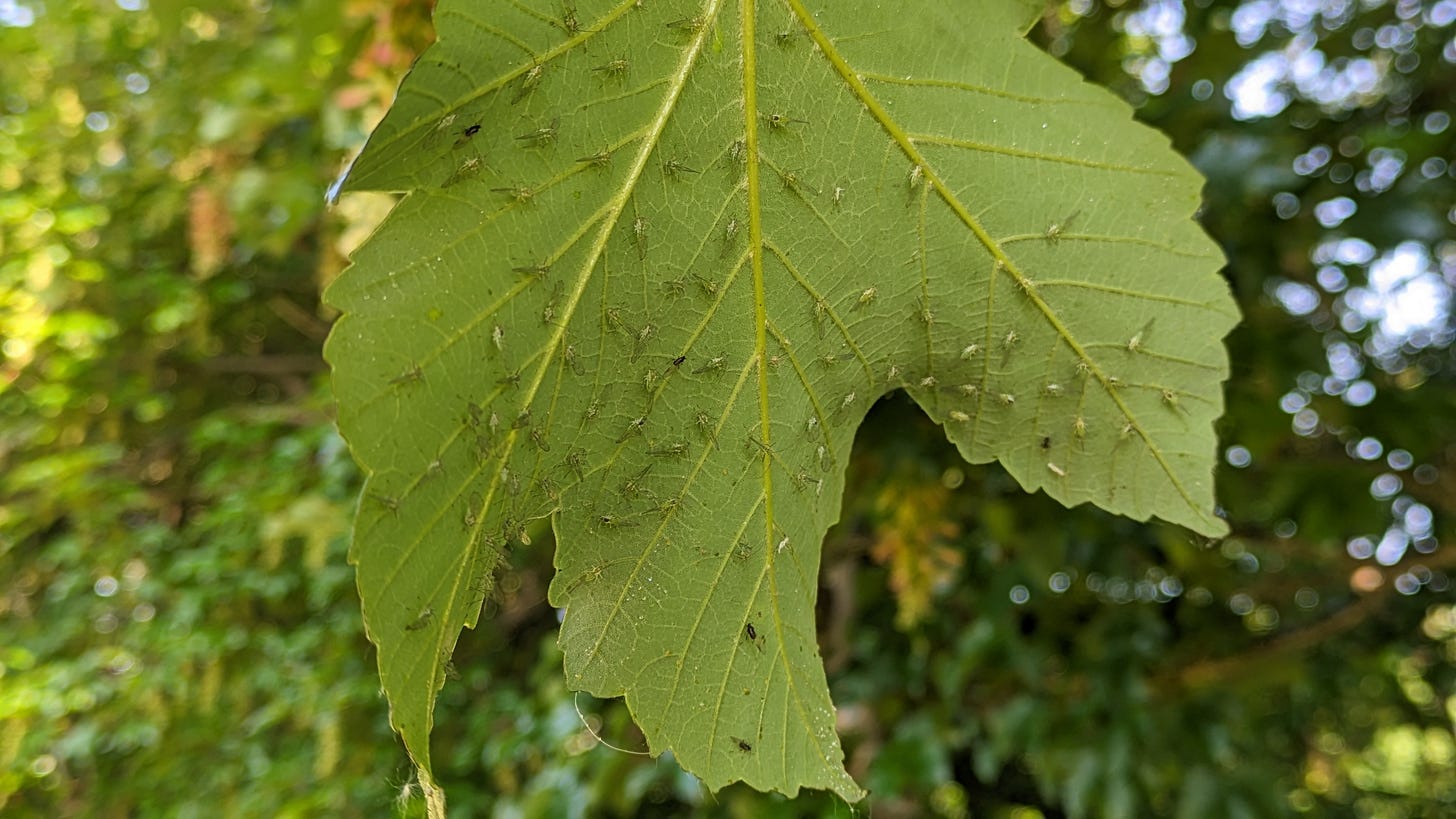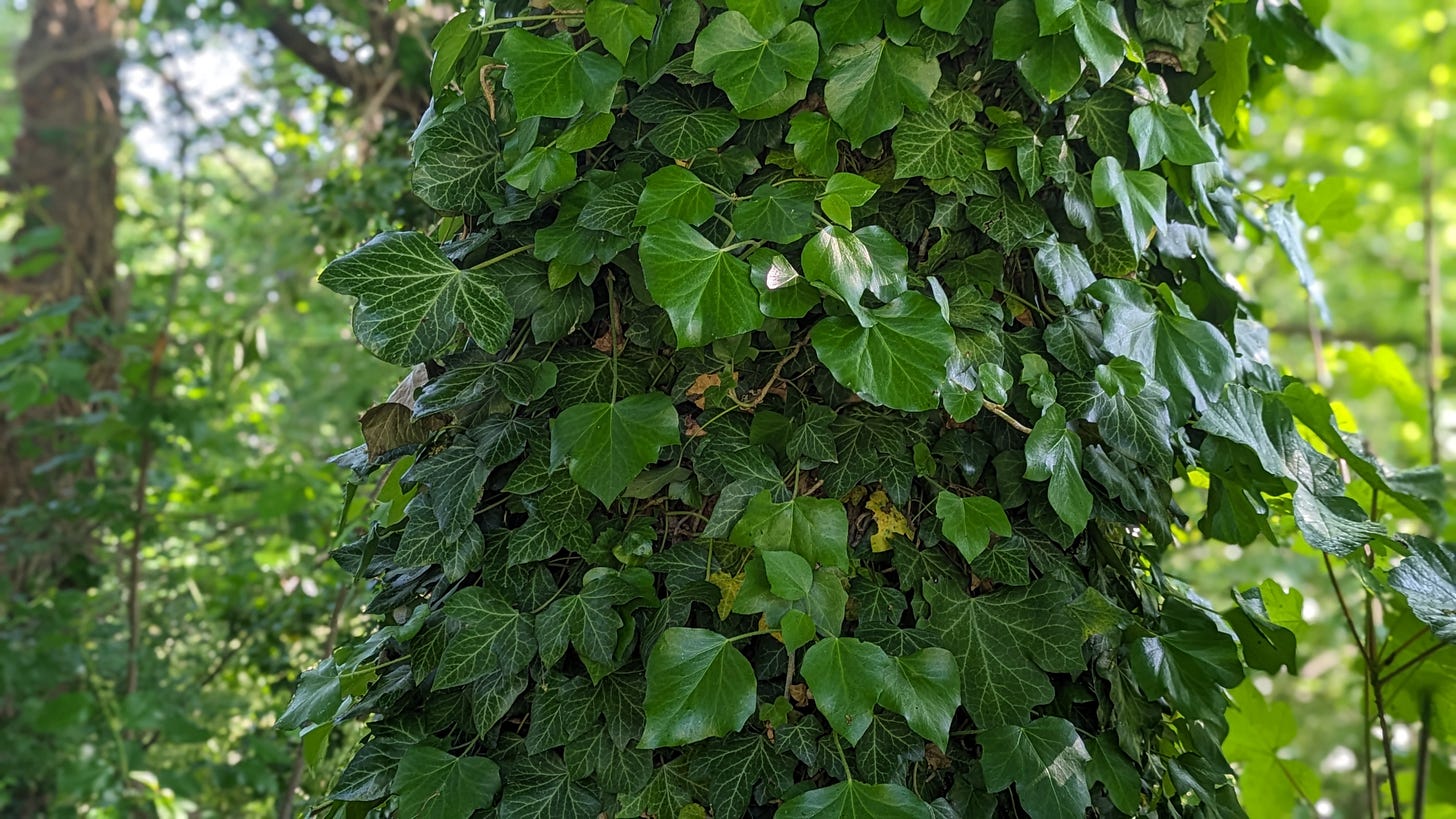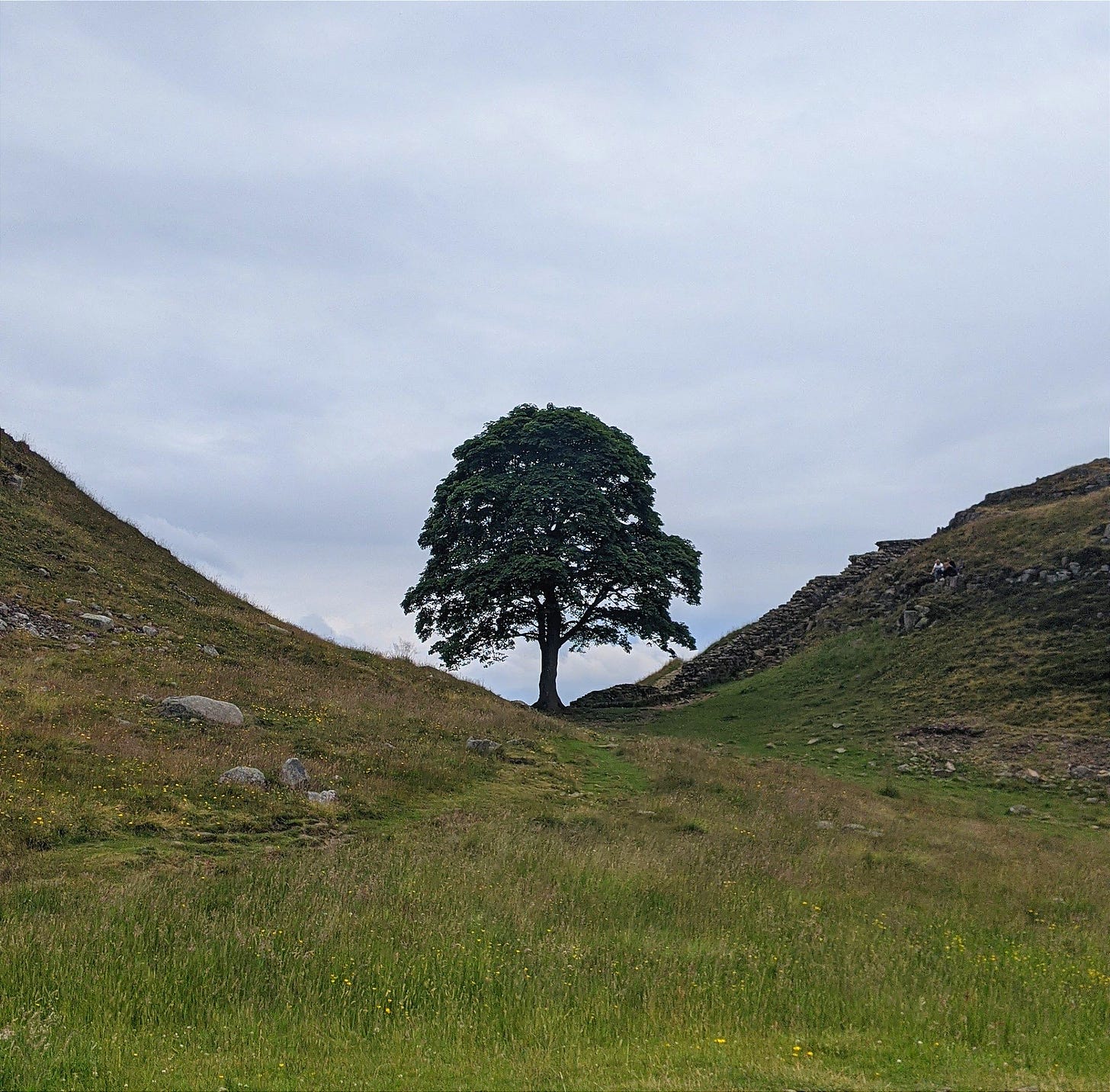I accidentally went on a three-hour walk this week. I say “walk”, but if I’m honest I was standing still for a lot of it. Dazzingly pink hawthorn, a pair of regal swans, an impressively perfect guelder rose, a song thrush putting on a show… Everything is just so damn beautiful and green and floofy and distracting out there right now.
As I approached the woods I was aiming for, something made me stop under a sycamore tree. I’d been thinking about my old flat, which was on a street lined with sycamores. My neighbours would complain that parking under the trees left their cars covered in something sticky. “What was that sticky stuff?” I wondered… And then I looked up.
What I saw was thousands and thousands of tiny insects on the tree’s leaves. I later discovered that these are sycamore aphids and they spend all year living on sycamore trees, feeding on their sap. As the aphids suck out the sap, they excrete something called honeydew - a pretty lovely name for something so hated by motorists!
According to this informative post by Wildlife Friendly Otley, sycamore aphids overwinter as eggs in bark crevices and behind buds before hatching in spring. They will stay on the tree’s leaves until migrating in spring/summer to another sycamore tree. I looked into why they move from one tree to another before I realised my brain was already too full of information to take in anything about aphids moving tree, but if you’re interested, knock yourself out, there's a whole article about it here.
What I actually want to encourage you to do this week is to go and find a tree and stand under it. Notice how many other things you can see relying on that tree or living on and around it. Can you see a birds’ nest? Maybe you can hear a bird singing from a high branch, staking claim to their territory. Are there any bugs or insects you don’t recognise? Or some subtle lichen to be found on its trunk? You might spot some fungi - a hint of the whole network of mycelium working with the tree to transfer water, nitrogen, carbon and other minerals.
Sycamore trees not only play host to sycamore aphids (whether they like it or not), but provide food and shelter for a variety of animals. In the short time I was standing under the sticky sycamore this week, I spotted several birds, mosses, lichens, ivy, and loads of ladybird larvae. As you’ll know if you’re a gardener, ladybirds love to eat aphids! Unlike many aphids though, sycamore aphids are apparently not farmed and milked by ants. Yes, you read that right. Wait, I’m getting distracted again. There’s no time to tell you about ants herding and milking aphids. Another time…
For now, here are some photos of things I noticed on the sycamore tree I was standing under:
So go on, stand under a tree for a bit. Then come back and let me know what you notice! Oaks, for one, are said to support over 2,300 species in the UK. Sycamore may support fewer species than our much-loved oaks, and they often get tainted with the ‘non-native’ label despite the fact they’ve supposedly been here since Roman times, but I have a real soft spot for them and secretly quite enjoyed the fact they pissed off my neighbours and their precious cars! The trees were there long before they were.

In loving memory of the Sycamore Gap tree, felled by some ignorant idiots in 2023
Sources and Further Reading
Woodland Trust: Sycamore (Acer pseudoplatanus) profile
Wildlife Friendly Otley: Sycamore Aphids
Country diary: In praise of the ‘low-value’ sycamore tree by Phil Gates (The Guardian)











Thank you for sharing these delightful observations! Great photo of a ladybird larva—they're so cool and weird-looking!
I love to stand under my sycamore for the same reason!! I even put out a note about it. Thanks so much for sharing this information, it was really interesting 😊